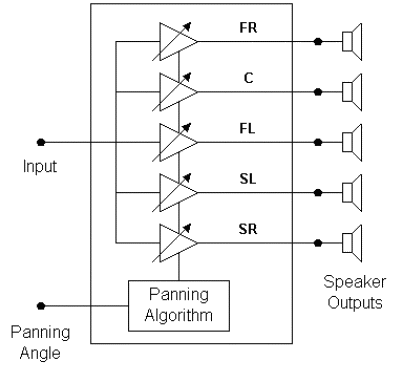
Abstract

Panning is the technique of adjusting the perceived horizontal azimuth of a sound produced by two or more loudspeakers. Five panning methods employing interaural intensity difference (IID) cues are described for application in creating 5.1 channel surround sound recordings for domestic reproduction. The first four methods are optimized for constant gain, constant power, velocity and energy vector equality, and avoidance of azimuthal aliasing, respectively. A fifth algorithm is developed as a compromise between the constant power and vector optimizations. All five algorithms are compared analytically using the four optimization techniques.
Listening tests are conducted on all but the constant gain algorithm. They are necessary because the perceptual significance of the vector and azimuthal aliasing optimizations is unknown. Tests using stationary and moving pans are conducted with 11 subjects in a non-anechoic room. Measurements are taken of the accuracy of horizontal azimuth, consistency of speed, consistency of distance, and consistency of image width. Results indicate that vector optimized panning is superior for center listening and constant power panning is superior for off-center listening. It is unclear if vector optimized panning performs well because of its optimization method or other factors.
The constant power and vector optimized algorithms are implemented in C++ as a DirectX audio plug-in for Windows95.
(Previous Chapter) <- Main Page -> (Next Chapter)
Jim West, University of Miami, Copyright 1998